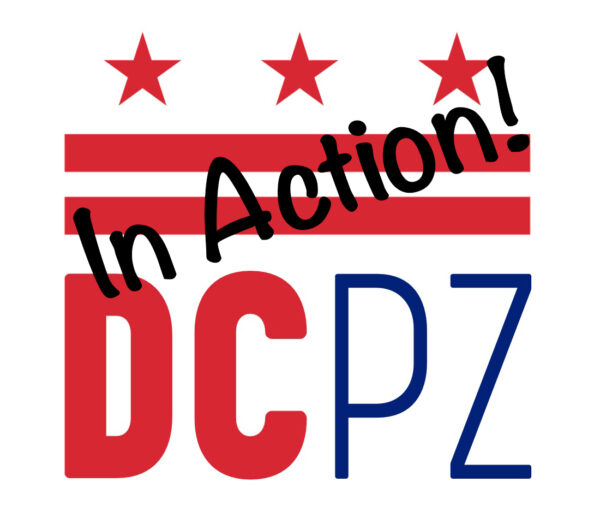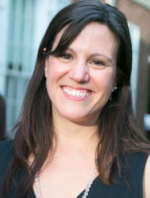DCPZ In Action, Vol. I: Marci Jones and Emily Veres

“DCPZ In Action” is a new feature that will highlight, from time to time, the many ways in which DCPZ educators are using Project Zero ideas in their practice. We hope that our readers will be inspired to try something new in their own setting. Each of these articles will also be posted on the PD Collaborative website as blog posts.
In this edition, we look at two DCPZ educators in very different contexts:
Marci Jones is the Global Studies Coordinator at H.D. Cooke Elementary School, a Title I DCPS school in the Adams-Morgan neighborhood of Northwest DC. Marci works directly with teachers, supporting their professional development and assisting with curriculum design.
Emily Veres is a high school Biology teacher at the Washington International School, an independent Preschool-Grade 12 school in the Cleveland Park neighborhood of Northwest DC. Both are actively engaged in the DCPZ network and serve on the faculty of WISSIT, our annual summer institute.
Marci Jones:
At Cooke, it’s Marci Jones’s personal mission to “expose teachers to Project Zero ideas/philosophies.” She says this mission is deeply rooted in her belief that PZ principles are the foundation for best practices in education, and that the students in her school deserve to have teachers who are steeped in innovative pedagogies. She pursues her goals through her role as Global Studies Coordinator at Cooke, where her duties include coaching teachers; creating and facilitating professional development; bringing in partner organizations to the school to work with both teachers and students; and designing and re-designing curriculum.
Marci and her team were first introduced to Project Zero in 2016 through a two-year research project with PZ researcher Veronica Boix Mansilla, which focused on understanding and implementing the Global Competence Framework. Called The World in DC, the project entailed professional development “around what it means to educate our children in a way that prepares them for an increasingly interconnected world while ensuring that our students are mastering the Common Core State Standards.” It was a truly transformative experience for the school: Marci has watched as her whole school community has shifted its approach to pedagogy through engagement with the project, WISSIT, DCPZ, and Project Zero book studies. Of late, they’ve become especially “enthralled” with the concepts of Making Thinking Visible and Maker-Centered Learning.
Marci can think of at least one project, lesson plan, or unit for each grade level that was inspired by Project Zero. She says, “All of these experiences were intentionally designed to incorporate the Global Competence Framework (developed by Boix Mansilla and Anthony Jackson in conjunction with the Asia Society). We thought deeply about how to engage our students in learning experiences that would invite them to investigate the world, communicate their ideas, understand the perspectives of others, and take action on issues of local and global significance.”
Here are some examples from Cooke:
- Fifth grade students explored the urgency of immigration issues facing our country’s migrant population and the complexity of the Black Lives Matter movement.
- Fourth grade teachers artfully co-opted morning meaning time and instructional time to explore the Syrian Refugee Crisis and the nuance involved in each country’s response.
- Third graders engaged in activism during their “Save The World Day” to culminate the DCPS Ecosystems unit by contacting Mayor Bowser and Rep. Eleanor Holmes Norton. They also carried out a public awareness campaign in the surrounding community.
- Second grade mathematicians explored issues of representation by closely examining how various news sources reported the death toll from Hurricane Maria in Puerto Rico versus the continental United States.
- First graders staged a children’s march to create awareness about gun violence in the very spot that Dr. Martin Luther King delivered his famous “I Have A Dream” speech.
- Kindergarteners utilized thinking routines to explore what life might be like without community helpers.
For any teachers or administrators who are interested in beginning the journey to bringing Project Zero principles to their schools, Marci has this sage advice to offer:
“Start small: Decide what you want your focus to be and seek resources and people to help build your understanding [of PZ]. Find people who are interested in learning with you and learn together. Document everything and don’t be afraid to fail forward. If your school has the resources, attend WISSIT or the Project Zero Classroom summer institute. If your school doesn’t have the resources, utilize the Project Zero website, read articles and books written by PZ researchers, and attend the free DCPZ events to build community.”
Emily Veres:
This fall, Emily Veres led her 12th grade higher level International Baccalaureate Diploma Program Biology students through a unit on human migration, viewed through both a biological lens–tracing population movements through DNA mutations and markers–and an historical lens–examining the “push and pull” factors that motivate people to migrate to new areas of the world. Goals for the unit included increasing students’ ability to recognize and understand the multilayered complexity of human migration as a universal phenomenon. Emily also wanted her students to examine their own roles as citizens of the world, and to consider what actions they could take–in the present–in reaction to current patterns of human migration.
To start, the students, using the Take Note thinking routine, looked at several different maps that showed migration patterns across time and various factors, from prehistoric migrations to modern movements owing to climate change. This activity helped form a baseline of understanding of the who, what, when, where, and why of human migration. Further activities, anchored in PZ thinking routines and practices, such as See-Think-Wonder, Chalk Talk, and Gallery Walks, encouraged the students to empathize with migrants by considering what would make individuals, families, or communities transplant themselves to a new home, and what challenges and opportunities might arise because of that move.
As a culminating activity, Emily invited each of her two class sections to come up with a method of visualizing the complexity of human migration in a way that would speak to their school community. Each class decided to use a large map with added layers to show different types of migration, but each group went in distinct directions in their map-based visualizations. Class A decided to show both “modern and historical major migration events” using strings and beads to represent specific movements, number of people, and the motivations (or the “push” and “pull” factors) of each event. Not wanting to lose the humanity inherent in the topic, they included QR codes that linked to individuals’ personal stories of migration. In a similar vein, Class B opted to illustrate the global scale of migration by tracing patterns of lactose in/tolerance over time, and the human scale of migration by including visualizations of the movements made by the families of their own school community.
At the end of the unit, the students reflected on their process and what they had learned using a combination of the Chalk Talk and “I used to think…Now I think…” thinking routines. Excerpts from the students’ reflections demonstrate the impact of the lesson, and particularly the use of maker-centered learning as a tool for understanding.
Here is just a small sample:
- “I haven’t had such a meaningful discussion in a long time.”
- “I had a different understanding when I was constructing the map myself–I don’t get the same feeling from researching or listening about it.”
- “The process of making was the real learning…”
We know that most–if not all–of our DCPZ members are finding exciting and creative ways to bring PZ ideas into their practice and school culture. If you would like to share your story/stories, please get in touch with us. We would love to highlight you and your work in a future blog post/newsletter!

